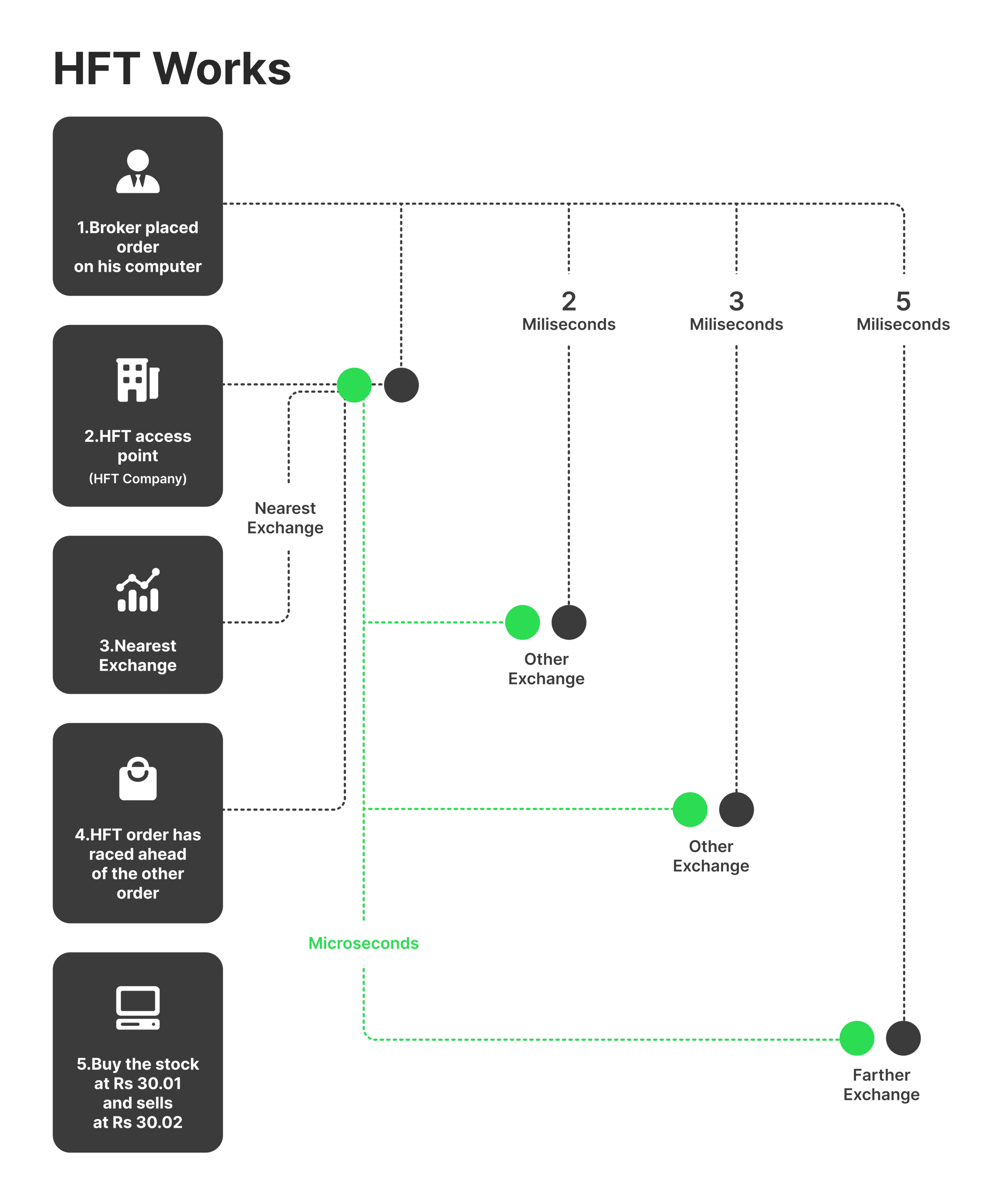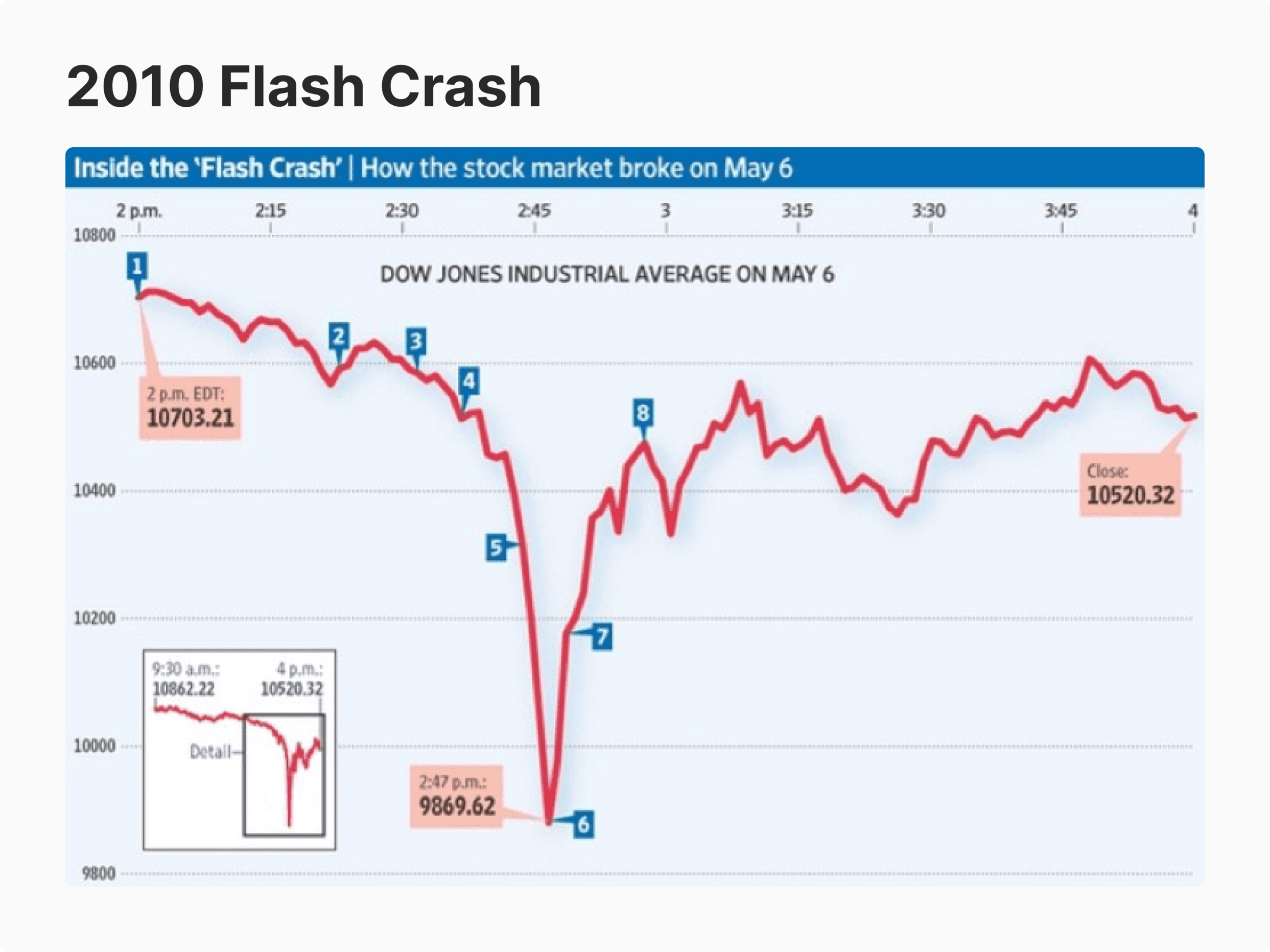Is an HFT Firm a Profitable Business? How to Start Your Own?

A versatile writer in a wide range of concepts, specifically in Web3, FinTech, crypto and more contemporary topics. I am dedicated to creating engaging content for various audiences, coming from my passion to learn and share my knowledge. I strive to learn every day and aim to demystify complex concepts into understandable content that everyone can benefit from.
Long hours of reading and writing are my bread and butter, and my curiosity is the catalyst to becoming the experienced writer I am. I excel at writing in English and Arabic languages, and I am endlessly looking to explore new realms and endeavours.
Tamta is a content writer based in Georgia with five years of experience covering global financial and crypto markets for news outlets, blockchain companies, and crypto businesses. With a background in higher education and a personal interest in crypto investing, she specializes in breaking down complex concepts into easy-to-understand information for new crypto investors. Tamta's writing is both professional and relatable, ensuring her readers gain valuable insight and knowledge.

The financial market is an extensive space for brokerage companies, trading startups, investment service operators, and multi-million dollar investing firms that use innovative technology and software.
This combination makes the industry highly dynamic and competitive, especially with the foundation of advanced systems that make trading more achievable. High-frequency trading significantly shifted the trading industry, introducing rapid systems to key players and giving them a competitive advantage.
Adopting a high-frequency trading technology can massively boost your performance. Let’s explain how you can launch an HFT firm and compete in this space.
High-frequency trading involves using highly advanced technologies to execute market orders at unparalleled speeds.
HFT brokers benefit from ultra-low spread ranges and slippage, offering the best trading opportunities to institutional investors.
Creating an HFT firm can be significantly expensive. However, the returns can substantially offset these costs.
HFT firms can potentially manipulate the market and acquire unfair competitive advantage, creating imbalances.
High-frequency trading allows brokerage firms to execute market orders using ultra-fast software and timeline tracking, enabling them to track price actions more accurately and make winning decisions. The introduction of high-frequency trading platforms came with the digitalisation of brokerage platforms in the 1990s.
The first HFT system was created in 1983 by a computer programmer, Thomas Peterffy. A billionaire currently known as the founder and chairman of Interactive Brokers, Thomas made a revolution by introducing hand-held devices to trading floors.
Renaissance Technologies contributed to the popularity of HFT software by offering HFT trading, algorithmic trading and proprietary trading, which spurred the adoption of high-frequency systems among other market participants.

Large financial institutions and investment firms raced to get their hands on this revolutionary technology. Earlier, digital trading platforms allowed trading desks and platforms to measure execution times in minutes and seconds. However, HFT extended the time tracking to milliseconds and microseconds, giving large financial firms a significant advantage.
Initially, HFT trading firms focused on NASDAQ, which was the firm exchange to go fully digital. However, in the 2000s, this technology has spread to other asset classes, including Forex, futures contracts, and money markets.
This development was aggravated by the switch to optic-fibre network cables and the SEC’s decision to allow HFT firms to compete in the NASDAQ and NYSE exchanges. However, the uncontrolled usage contributed to several market failures, including the 2010 Flash Crash.

Today, three key HFT firms dominate the trading market. These are:
Fast Fact
Some of the best brokerage firms that use HFT include Citadel Securities, Two Sigma Securities and Goldman Sachs & Co.
Prop traders, investment funds and liquidity providers use quick-paced trading strategies to take advantage of fractional differences in time tracking, price changes and platform dynamics and leverage them for substantial market positions. Here are four ways HFT firms make money.
HFT brokers can make money from trading activities by executing short-term, long or short orders, also known as directional trading. High-frequency trading firms utilise their vast resources and advanced technologies to anticipate upward and downward market movements and invest in those positions.
Using HFT software, brokerage firms can process orders much faster than retail brokers and other market participants, gaining a competitive advantage.
HFT firms can also gain from providing liquidity to other exchanges, prime brokers and electronic communication networks (ECNs). These financial institutions act as market makers by constantly buying and selling in the market using fast execution and low bid-ask spreads.
HFT liquidity providers supply these securities to other market participants and brokers for particular fees. The better the liquidity offering is, the more businesses HFT firms serve and the more fees they accumulate.
Arbitrage is an advanced trading strategy that the best HFT firms utilise to accumulate fractional returns from natural market dynamics. Geographically dispersed stock exchanges and trading venues may have slight price differences for the same security.
Brokers can take advantage of small market imperfections to buy low-price assets and sell them at a higher price in another exchange. These market inefficiencies are usually tiny, but executing large orders can result in significant returns.
Creating artificial price spikes is an old approach that many firms followed, which involved processing multiple long orders to stimulate a “buy” market sentiment. Then, HFT firms would anticipate a price correction and place many short positions.
Since this was considered market manipulation, it was banned by the SEC. Nowadays, HFT firms use advanced technical and fundamental analysis methods to accurately predict market movements, execute matching orders quicker than other participants, and take the first buyer’s advantage.
Multiple factors determine the cost of your HFT startup due to the complexity of the high-frequency trading software. Let’s explain the costs by breaking down the elements of this trading system.
Your trading platform is the core of your HFT firm, where all trading activities happen. You can develop the trading system using in-house resources, which is an extensive process requiring significant time and capital. Alternatively, you can get a turnkey solution using pre-built software to meet your needs.
Estimated costs: from $10,000 to $25,000.
After building your brokerage platform, you must supply the system with market data feeds. High-frequency trading is data-sensitive, and you need to find the best data providers for the slightest tick, allowing you to track market movements by milliseconds and microseconds.
Estimated costs: from $5,000 to $50,000.
The server is the machine that ensures timely order execution and quick order matching. Ideally, you need a solid server with close cross-connections to main trading venues and stock exchanges. The larger the server with more processing cores, the better the execution performance is.
Estimated costs: renting a server costs $2,000 to $5,000 monthly.
While HFT companies do not have special permits in most jurisdictions, operating as a brokerage firm and conducting financial transactions requires a brokerage or broker-dealer license.
Estimated costs: these licenses have insignificant fees. However, you must have sufficient investing capital, starting from $100,000.
The high-frequency trading industry has grown exceptionally over the last few years, and this trend is expected to continue. In 2021, the market size was estimated at 7.7 billion, growing at a compound annual growth rate (CAGR) of 11.8%, reaching over 19 billion in 2032.
Numerous factors contributed to this phenomenal growth, including the COVID-19 pandemic, when online trading demand spiked, and financial markets were highly volatile.
In 2024, the industry benefited from the growing trends in artificial intelligence and machine learning, improving the HFT algorithms and utilising ultra-fast processing and order execution.
Launching an HFT firm requires significant commitment and monetary investment. A high-frequency trading company differs from a retail brokerage in terms of order execution speed, adopted technology, trading software and market access. Here are five steps to create a successful HFT brokerage firm.

First, you must craft a business plan and strategies based on your short-term and long-term goals and expectations, whether you want to build a niche brokerage firm or a multi-national corporation using robust HFT software and serving a vast number of customers.
Your HFT plan is significant in obtaining the required license, attracting venturers to your business and cooperating with legal financial agencies. Determine your target market, which helps you understand the legal requirements, such as initial operational capital, leverage limits and permitted financial instruments.
Finally, design a marketing strategy to promote your brand and build a network of introducing brokers, brand ambassadors, intermediaries and affiliates to help you spread the word about your HFT company.
Find a technology solution provider to acquire a ready-to-use trading platform with pre-designed dashboards, investors’ interfaces, an execution engine, and account management modules. You can customise these white label platforms to suit your needs and customer preferences.
Other integrations you will need for your HFT platform include a back-office CRM system, a payment gateway provider, trading software and a customer service tool, such as live chat and e-mail support.
Most importantly, find a data and liquidity provider that gives you access to trading markets. Liquidity providers offer a range of tradeable instruments, while data centres offer high-speed connectivity to trading venues and stock exchanges.
Whether using your savings, other business proceedings, or borrowing, you must ensure significant capital for legal requirements and pay the costs of setting up a reliable HFT company.
Building an attractive business plan can help you find angel investors and venture capitalists to invest in your firm and grow substantial funds to launch your HFT platform.
A clearing house is a financial agency that makes trades “happen”. Regardless of your brokerage type, these entities receive market orders under the given conditions, place them in the underlying exchange venue and deliver the promised payout.
Finding a clearinghouse is required to ensure timely order execution according to applicable laws and regulations. These agencies work closely with financial authorities to monitor financial transactions and ensure their legality.
Cooperate with a clearinghouse based on your needs and trading volume. You can find a clearing agent from small financial advisors to renowned institutions like Barclays and Capital One. Note that these agencies charge clearing commissions and fixed service fees.
After building and strategising on your HFT firm, now it is time to find clients and customers who will use your services.
As an HFT firm, serving end-users and investors may not be profitable because your services will cost a relatively high premium, and you will not likely secure sufficient volume to pay off your costs.
Therefore, aim for institutional investors, prime brokers, and Prime of Prime (PoP) firms. These firms offer financial services to a large number of traders. Prime brokers serve a network of retail brokerage platforms using ultra-fast trading connections and demand HFT intermediaries.

The PoP model aims to secure market access through ECNs and DMA strategies to offer the best trading conditions. PoPs search for HFT companies to gain access to trading markets.
A high-frequency trading platform can be highly lucrative because of the increasing need for this software. However, some challenges arise when setting up and operating HFT activities. Let’s explore the benefits and drawbacks of these firms.
Increased liquidity as HFT algorithms constantly update prices and search for the best prices and bid-ask spreads.
Ultra-fast execution speed to capitalise on momentarily market opportunities and minimise slippage instances.
Finding profitable investing opportunities as HFT systems process and analyse large data to locate the best trading opportunities.
HFT firms create unfair market advantage, giving corporations with significant resources better opportunities and access than other market players.
Financial advisors and authorities have repeatedly criticised high-frequency trading, attributing it to various economic turmoils and crises.
Operating an HFT startup can be significantly costly, with high fees and complex setups that make it challenging for new firms to realise profits.
A high-frequency trading firm is a brokerage company that uses ultra-fast trading software and algorithms to execute orders much faster than retail brokers.
HFT systems use advanced technologies to provide direct market access and unrivalled connectivity to trading venues and stock exchanges. They allow institutional investors to capitalise on rising market trends much faster and process orders with almost zero bid-ask spread and slippage.
Launching an HFT firm requires substantial investment to integrate reliable technologies and trading software, secure operational capital and find business partners. Therefore, it is crucial to stick to our five-step guide to building a successful HFT brokerage platform.
Yes. High-frequency trading companies serve an expansive network of retail and prime brokers who offer trading services to many investors. This approach secures high trading volumes, allowing HFT firms to earn substantial amounts.
The costs depend on the legal requirements. Some jurisdictions require an initial capital of $100,000. Additionally, you must account for the platform, trading software, CRM system, clearinghouse and other service fees, which can cost an additional $100,000.
High-frequency trading is legal and regulated in many jurisdictions. However, many HFT companies were accused of participating in illegal manipulation, creating fictional market volatility and obtaining unfair advantage.
Regulatory scrutiny is a rising challenge for HFT firms as regulators keep cracking down on these brokers. Additionally, HFT practices open the door for market manipulation and obtain unfair competitive advantage.
Share your queries in the form for personalized assistance.